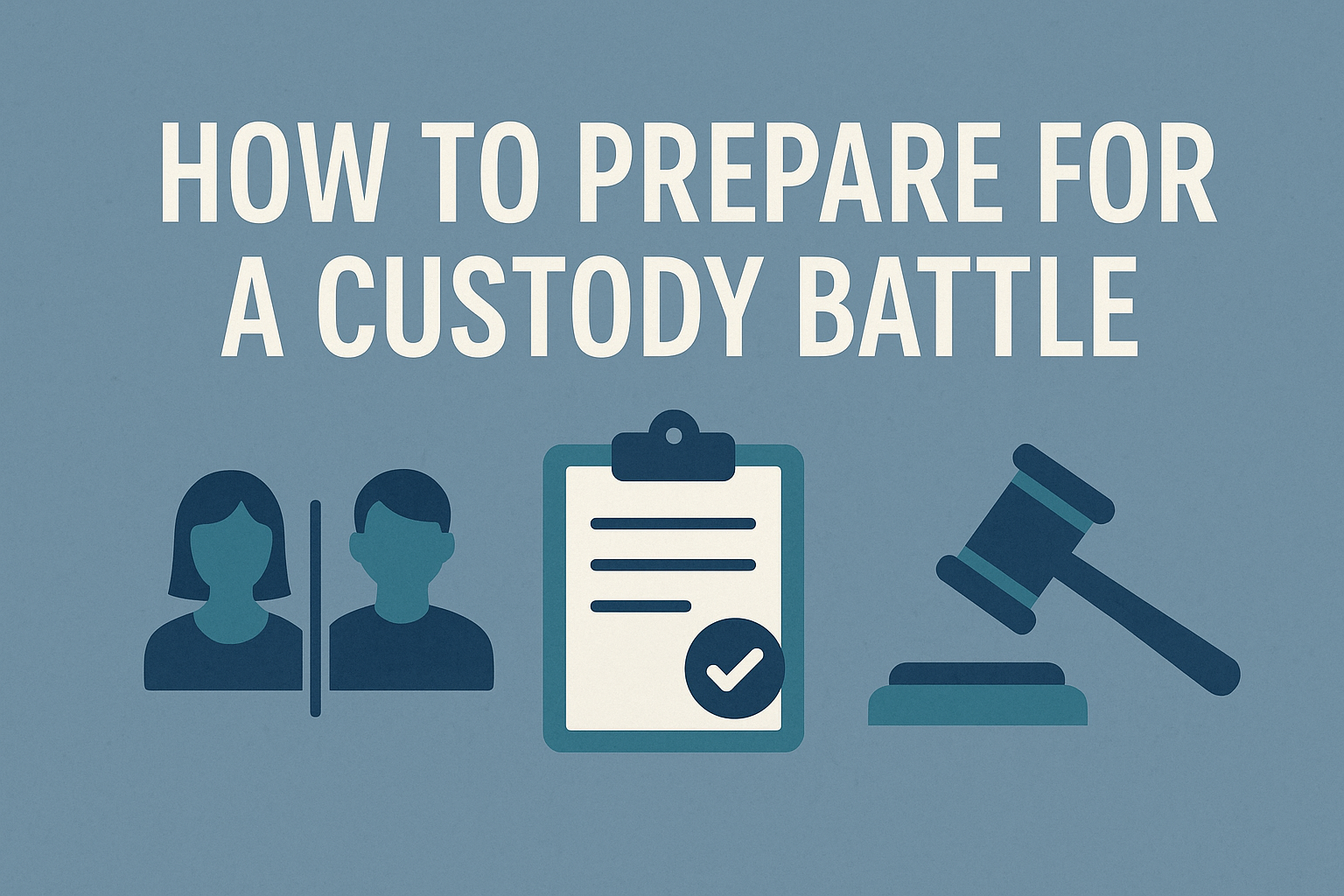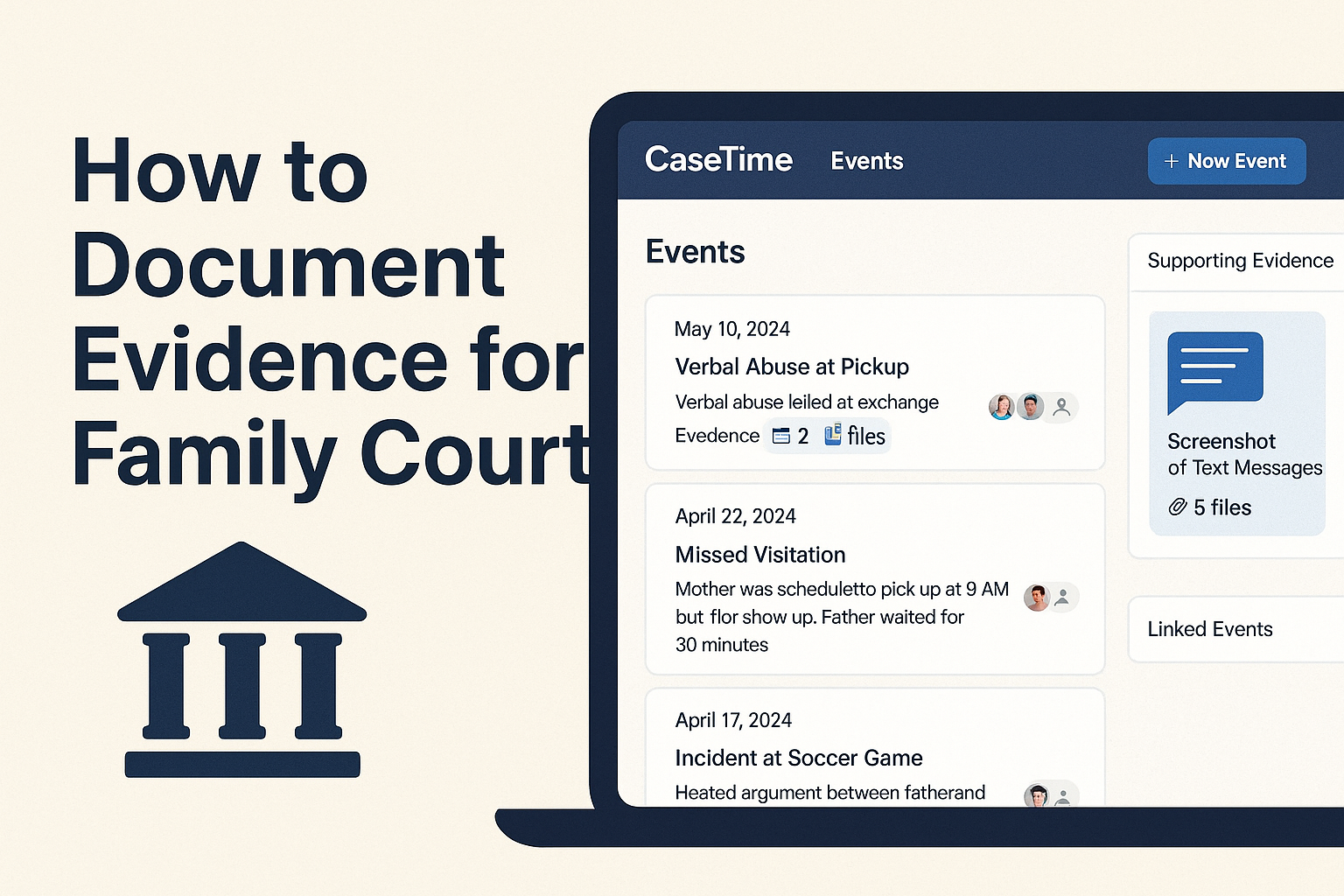
How to Document Evidence for Family Court
Going through family court—whether it’s for custody, divorce, or support—can feel like stepping into battle without armor. The truth is, evidence wins cases. It’s not about who’s louder or more emotional. It’s about who is better prepared, more organized, and has documentation to back up their story.
In high-conflict situations especially, your credibility is everything. Whether you’re dealing with false accusations, inconsistent parenting schedules, or ongoing harassment, your ability to document events clearly and calmly can be the difference between being heard or dismissed.
So—how do you actually document evidence in a way that holds up in court?
1. Log Events in Real Time (Not Weeks Later)
Memory is unreliable. The stress of family court often warps timelines, and small details become major issues in hindsight. You need to capture incidents when they happen, not weeks later when you’re scrambling for clarity.
✅ With CaseTime, you can instantly log events from your phone or computer, add a description, attach screenshots, emails, or photos, and timestamp it all securely. No more digging through your phone or trying to remember what happened when.
2. Be Specific — Include Dates, Times, and Facts
Don’t just say “she was late.” Say “On May 3rd, pickup was scheduled for 4:00 PM. She arrived at 5:15 PM without notifying me.”
Facts—not feelings—are what the court wants. Avoid vague language and stick to what you saw, heard, or experienced.
💡 CaseTime helps you standardize your entries, so every event has a date, time, involved parties, and any attached evidence. Over time, this becomes a timeline that shows patterns of behavior—critical for custody or visitation disputes.
3. Attach Supporting Evidence
Texts, emails, voicemails, call logs, photos, even screenshots of social media posts—these are all admissible in many family courts, especially when properly preserved.
📎 With CaseTime, you can attach these files directly to the event record. No more juggling Dropbox folders or hunting through your inbox before a hearing.
4. Tag the People Involved
When there are multiple parties—exes, children, attorneys, therapists—it’s important to note who was involved in each incident. Courts want clarity, and you want your documentation to connect the dots for them.
🏷️ CaseTime allows you to tag participants in every event, so later on you can filter by person and build a strong, focused timeline—whether it’s about missed pickups, verbal abuse, or medical decisions.
5. Connect Events, Files, and Patterns
Sometimes, a single event doesn’t tell the whole story—but a sequence of events can. Think of repeated no-shows, boundary violations, or inappropriate communications over time.
🔗 With CaseTime, you can link related events and files together. For example, you can connect a threatening text to a missed exchange, attach a police report, and link a follow-up therapy session—all in one organized chain. This gives your attorney (or judge) a clear narrative instead of scattered notes.
6. Don’t Wait Until You’re Asked
Start documenting before things go wrong. If you’re dealing with a narcissist, a combative co-parent, or just preparing for litigation, you don’t want to be reactive.
🔐 CaseTime keeps everything private, encrypted, and stored securely in the cloud. You can organize by topic, filter by date or participant, and export timelines when needed.
7. Bonus: Collaborate with Your Team
Your lawyer, coach, or therapist shouldn’t be left guessing. When everyone has access to the right documentation, your support team can advocate for you effectively.
👥 CaseTime has a professional portal that allows you to share read-only or editable access with your attorney, coach, or other professionals—so they’re always in the loop and can build your case faster.
